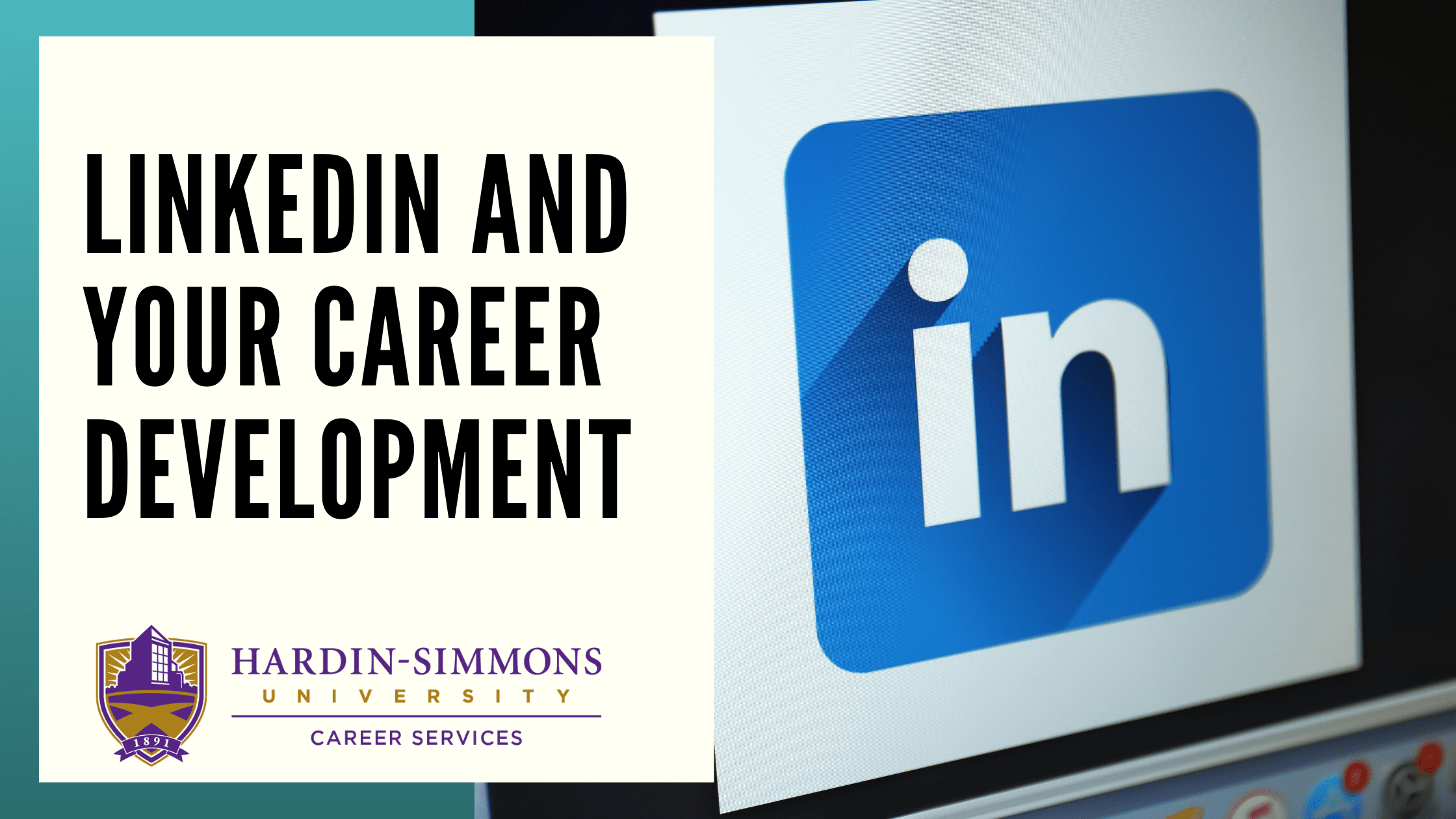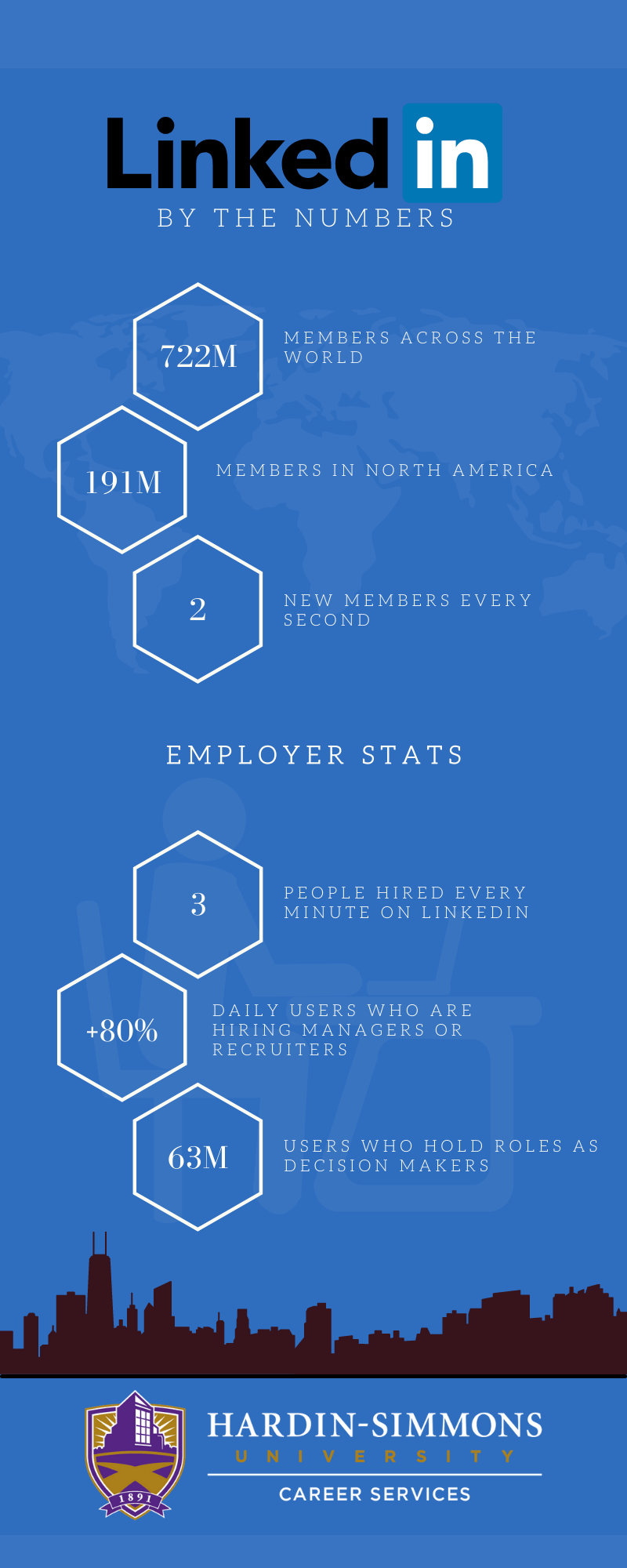Cowboy Career Column

February 19, 2021
In business, you want to be the preferred provider. You want to have the recognition and establishment as a trustworthy source and servicer to those in need of your offerings. When beginning my private practice in career development, I learned something very important about growing a brand and professional reputation.
When I studied counseling in graduate school, I was exposed to all the therapies, the techniques, the theoretical frameworks, the licensing demands… I was prepared for everything EXCEPT drumming up business. Thankfully God placed wonderful people in my life as I was studying who would later connect me to the resources needed to learn vital skills in networking and marketing. These folks introduced me to word-of-mouth marketing and the concept of referral confidence.
The more I engage in my community, network with those around me, and offer to give before ever asking for anything in return, the more I will gain trust and confidence by those individuals. This is what referral confidence looks like. I gain confidence from others as I increase my visibility. This subsequently grows my credibility and, finally, my profitability. Without being visible I gain no credibility and will not reap the rewards of having established myself among those in my community/industry.
This same concept in the world of business marketing applies to effective job seekers. A student who desires to maximize their outcomes upon graduation will proactively manage their brand and reputation throughout their collegiate career. Instead of being the preferred shop or servicer, you’re endeavoring to be the preferred applicant for graduate schools, internships, or entry-level positions.
Are you achieving visibility and growing a brand associated with knowledgeability in your field?
An area where students aren’t spending enough time is proactively managing their professional reputation and industrial visibility.
I had the privilege of hearing a story a few months ago of how a student attended a professional conference. This student was participating in a group discussion with a key presenter and prominent business owner from the conference when they looked at the group of students and asked who was already on LinkedIn. The student raised their hand and noticed they were the only one. The businessman passed her his card and invited her to connect. This led to an employment opportunity.
No, I’m not saying businesses will come offering you jobs just because you have a LinkedIn profile (which can still happen). The point I am making is that luck favors the prepared. In this case, a student had spent diligent time and effort building an effective LinkedIn profile and participating in professional development conferences for intentional networking and VISIBILITY.
Intentional visibility can look many ways in today’s career marketing campaign:
- Writing Articles
- Commenting on Industry News Pages
- Posting to Professional Association Groups
- Requesting Informational Interviews with Local Professionals
- Delivering Poster Presentations at Community Events
- Volunteering Services at the Library
- Thoughtfully Commenting on Companies’ Professional Social Media Accounts
The bottom line is this. To increase credibility as the preferred candidate for graduate school, internships, and/or employment, you MUST own your brand by intentionally increasing positive visibility among decision makers in your industry’s network.

January 8, 2021
If you’ve come to visit HSU Career Services, then you’ve probably learned that we like data and statistics. When numbers talk, we like to follow them and see if there’s important insight to be gained. In a world where our first impression will likely be our digital impression, LinkedIn comes near the top of conversation.
Because, if LinkedIn is truly the résumé that never sleeps, we need to give it the attention it deserves.
If you’re like me, you’re hesitant to try anything new related to social media. No matter how many of those spammy LinkedIn invitation emails I got, I stayed away as long as I could. That time ended up being when I got deep into studying career development and job search strategies. LinkedIn is number one and has a death grip on the professional social media space…and it isn’t going away anytime soon. To put it bluntly, in today’s job search LinkedIn is an absolute.
Here are a few reasons why:

The bottom line is, if LinkedIn is where employers, recruiters, and hiring managers are spending their time, that’s where job seekers should be.
When you apply to a job online, you’ll likely be submitting your application and job search letters through software called applicant tracking systems (ATS). Modern ATS has the capacity to “score” candidates’ résumés based on how well they fit the bill. Those with the highest scoring résumés get looked at by a human being. Still looking good? You get an interview.
The math comes out to only the top 2% being awarded an interview.
LinkedIn is no different. The Microsoft-acquired platform has its own algorithms in place to “score” your profile for general searchability as well as when applying as a candidate within their recruitment tool. So, much like how we develop our résumé with targeted terminology of skills and value offerings, we also have to be diligent in creating a LinkedIn profile that is rife with words that we know will resonate with the recruiter/hiring manager.
The algorithm weighs certain areas of our profile more than others. The section that gains the most weight is the Headline. This is why we advocate against generic position titles and statements such as “Open to Work” or “Seeking New Opportunities.” If we want to be found for Project Management, then having a LinkedIn Headline without “Project Management” in it would be doing us a disservice.
Our profile should be engaging, personable, and filled to the brim with terminology that most aligns us with our target role for two main reasons:
- So that we can be easily found by recruiters and hiring managers.
- So that we are branded as a qualified candidate for those opportunities.
This is also one of the reasons why we advocate against attaching a résumé to the profile. As previously mentioned, today’s best résumé contains terminology tailored to the employer’s needs and (most commonly) the specific job posting announcement. Posting a generic résumé does not allow us to show an employer that we can genuinely meet their unique needs.
There are many, many other ways to optimize our profile, but I won’t go into all of those details here. We have a separate presentation for that. Yes, LinkedIn is a place where we can successfully apply for jobs and display ourselves as a great candidate. But, that’s not the most powerful aspect of the platform.
LinkedIn was designed to be a place where we GROW OUR PROFESSIONAL NETWORK. It has grown to the point of adding an online job board, salary insights feature, e-learning module, and more. But we should primarily be using it to search for, connect with, and cultivate professional relationships within our industry of pursuit.
Start by connecting with friends and family. Then move on to HSU alumni, faculty, and staff. Lastly, begin exploring your industry and the names that continue to show up in popular content. Give Likes and thoughtful comments on their material they share to initiate the relationship. Shortly after, it will be acceptable to send a connection request containing a note expressing your appreciation for their content, conveying your area of study, and presenting your desire to have them become a part of your professional network.
Continue to engage with their content and attempt to continue networking off of LinkedIn in the form of a phone call, a coffee, or something else to learn more about what they do. But, DON’T ask for a job. This is about creating a professional relationship that you will be able to reap fruit from later on. Be a learner and a helper first.
Want to learn more about how to leverage LinkedIn for your career success? Students and alumni can join Handshake and schedule an appointment with HSU Career Services anytime. Reach out to careerservices@hsutx.edu for more information.
Don’t miss our in-person LinkedIn profile-building event on April 22nd, LinkedIn “Live.” Reserve your spot by registering on Handshake today!


October 7, 2020
We’ve designed our tailored, value-filled job search letters.
We’ve cultivated a professional network for leveraging mutual connections.
Now our job applications are beginning to see results. How do we know this?
WE’RE GETTING INTERVIEWS!
Many fret over having a good interview. This is why we offer in-person and virtual coaching along with mock interviews. Are you having a phone or Zoom interview? We’ll help you put best practices into place by setting up mock interviews in the exact format you’ll be interviewing in order to afford you the most accurate feedback possible.
Good interviewing is an art acquired through repetition. So, let’s practice.
However, today’s article isn’t necessarily about interviewing skills. Rather, it’s about what we need to take with us when we enter the virtual or actual meeting room.
I’ve had the displeasure over the years of seeing students show up to interviews without any knowledge of what they should bring along with them to put their best foot forward. Being equipped with the right tools will allow you to:
- Recall any past topics discussed with the employer prior to the interview
- Present a strong, positive first impression of preparedness and professionalism
- Fill their potential shortcomings in their own lack of preparedness
- Align your experiences directly to recent company needs
So, what do we need to bring with us (or have in front of us) during our interviews?
Notepad and Pen
Nothing says “attentive” like someone taking BRIEF, PURPOSEFUL notes. I say brief and purposeful because notating the entire interview isn’t appealing. Be prepared to quickly jot down key information that is provided to you about the position as the interview progresses so that you have a clear understanding and can highlight their needs more accurately in your follow-up documentation.
Water Bottle
No, not in your superhero thermos (looking at myself here). A small or medium-sized container is acceptable. Avoid developing a dry throat and going into a coughing fit because you weren’t prepared. Remember, final rounds of interviews can get long; especially when they want to take you around the office and introduce you to additional stakeholders and team members. Don’t get caught off guard.
Résumé
We’re never assured that the interviewer(s) will be prepared. Make certain you have a few copies of your résumé already printed out on résumé paper in your possession in case. On one occasion I met with a panel of interviewers who had copies of my résumé printed out ahead of time. However, their copier was on the fritz and they came out super dark. Some sections could have been difficult for some to easily read. So, I whipped out my perfectly printed documents and passed them around the room.
Cover Letter
Really, this applies to any job search letter you’ve sent over for your candidacy. If they bring up a value statement you presented in your cover letter, personal statement, statement of faith, value proposition letter, etc., you’ll want to be able to quickly refer to it and knowledgably respond to their inquiry. So, have a single copy of everything you’ve sent over for your candidacy to be able to reference.
Executive Briefing
If you didn’t incorporate the executive briefing style into your cover letter, be certain you have one available now. An executive briefing is a simple two-column format where you list what they want and how you have it. You can see an executive briefing-format cover letter example here.
Portfolio/Validation Project
Practically every candidate will be trying their best to convey their ability to perform the job. However, not many will be bringing PROOF. A portfolio of your work/value validation project is something you can tangibly bring with you into the meeting that shows your PROVEN capabilities to achieve the success they’re desiring from their new hire. This can look many different ways. For a photographer, it would most likely look like a true-to-name portfolio. For others it will take some creativity. Perhaps it’s project descriptions and outcome statistics. For me, it was past résumés I had written and a five-year plan for the Career Services department. These provide excellent interview conversation content and can bolster your candidacy above less-qualified competition.
Recent Company News
What has the organization been involved with recently? I had the pleasure of working with a student who received an internship (in part) because he knew more about what was going on with the company than the interviewer did. The student brought up how excited he was to see the company make amends with a partner entity across the country for greater growth down the road. After the interview, the student came back to visit with me and was afraid he would not receive the offer because the interviewer appeared to have been mildly put off with the fact that a past negative light regarding the company had been mentioned. On the contrary, it turned out that the interviewer vetted the student’s comments, saw the that student was accurate in his research, and was so impressed that the offer was sent his way.
Our interview materials can be neatly and professionally brought along with us in a padfolio. Don’t have one? Jump in on our Adulting 101 programs throughout the year and you just might WIN ONE FOR FREE!


September 18, 2020
On the occasional Saturday afternoon you’ll find my daughter and me spending some time at one of the local coffee shops here in Abilene. She’ll be busy guzzling down her chocolate milk with a cookie, getting ahead on schoolwork, reading, and coloring. I’ll be engrossed in my own studies, a latté, and preparing for the upcoming week.
A few weeks ago, we had the pleasure of sitting nearby a group of three local students. My daughter absolutely loved this. She felt like a such a grown up studying beside “real life college students.”
I took advantage of the opportunity to make a socially-distanced introduction and ask,
“What’s something you wish you knew more about for your career development?”
One of them very poignantly addressed the fact that they hear all about networking and building professional relationships, but they simply have no clue what to talk about when they invite someone to coffee, lunch, or a virtual conversation.
The concept she was referring to is an incredibly powerful tool for upcoming professionals called, INFORMATIONAL INTERVIEWING. It’s a fairly simple concept. But, as the student stated, the execution can be intimidating.
An informational interview is an intentional opportunity to learn more about:
- An industry
- The day-to-day functions of a specific job
- And (most importantly) building relationships with career professionals currently in that space
So, if our goal is to make a great impression while building a greater understanding for career decision making, what should an informational interview look like?
Be Curious
When sitting down with a career professional in your field of interest, they expect you to have some questions. And rightfully so. You invited them. Have a small list of topics and key questions prepared in advance. Some questions you can take with you include:
- Tell me how you became interested in this field.
- How do you stay up to date on today’s challenges?
- Are there any industry changes that have recently come about or you expect to see in the near future?
- What skills are in-demand at this time?
Be Forthcoming
It’s incredibly awkward when there’s a hidden agenda lingering in the background of a discussion. Instead of beating around the bush, be sure to make it clear that you’re intentionally trying to grow your professional network, gain more insights beyond the classroom, and set yourself up for success while making a some great professional relationships along the way.
Be Valuable
One reason you’re engaging in the practice of informational interviewing is to have access to the hidden job market. You’re going to want your name to come to these individuals’ minds when an employment opportunity comes upon their radar.
Don’t miss out on the opportunity to convey your value offerings and key achievements in your industry of study when they turn things around and ask you, “Tell me a little bit about yourself.”
This is the chance to bring up some of the same material you’ll have at the top of your résumé like:
- Project Highlights
- Delivered Presentations
- Program Recognitions, Scholarships, and Awards
- How You’ve Improved Your Academic Organizations
- Specific Achievements from Industry-Specific Internships
- Etc.
Be Helpful
People love to help helpful people.
Before the meeting concludes, ask them if there’s anything you can do to be helpful to their current goals. Seldom expect them to have anything for you to help with, but it’s the impression you’ll leave by offering that’s important.
And, as always, never leave an informational without asking the Golden Question of,
“Who would you encourage me to speak with about my career path? Can you introduce me?”
This question allows you to continue expanding your network, your professional brand, and your access to future opportunities.


September 8, 2020
𝐓𝐡𝐞𝐲 𝐰𝐚𝐧𝐭 𝐇𝐎𝐖 𝐌𝐀𝐍𝐘 𝐲𝐞𝐚𝐫𝐬 𝐨𝐟 𝐞𝐱𝐩𝐞𝐫𝐢𝐞𝐧𝐜𝐞?
Let’s be honest. When we’re scouring the internet for job postings, there’s one piece that seems to break our confidence each time we see it…
“At least X years of professional experience required.”
This one line has a track record of sucking optimism right out of a job seeker’s sails.
So, how do we address it? If we were to avoid applying to the job roles we don’t have all the qualifications for, we wouldn’t have many applications to fill out.
Many recruiters will tell you that the odds of acquiring a pool of applicants that have EVERY qualification listed is very slim-to-impossible. They don’t expect that to happen. Instead, they expect a majority of the qualifications to be met AND you sell them on the rest.
In the world of job seeking, the goal is simple; convey to the hiring manager that the value you have provided to your previous organizations is evidence that you can do the same for them.
The challenge, however, is digging out our unique accomplishments and effectively presenting them in the form of:
Résumés ~ Cover Letters ~ LinkedIn Profiles
Value Proposition Letters ~ Executive Briefings ~ Portfolios ~ Etc.
To fill our experience gaps, we need to get creative. One important thing to remember during your education is to be certain you’re staying connected to your industry of pursuit across professional organizations via student memberships.
Some great ways I’ve seen it done in the past include:
BECOMING A WRITER
What better way to connect yourself to your future profession than by establishing yourself as a reliable source of information on an industry-specific topic you want to be connected to. This will do wonders for your brand and will also verify that you know what you’re talking about. No one has to hire you to write about your vocational interests. Yet, if you write regularly enough, you can add this experience to your job search letters.
PRESENTATIONS AND SPEAKING ENGAGEMENTS
When I got started in career development, I needed to generate a client base. One way I did this was by sharing the information I had in the form of free events at the local library and coffee shop meeting rooms. Leverage your offerings by building material you can give away to your local community.
PRO BONO SERVICE
Where does your city need help? Just because it’s unpaid doesn’t mean it isn’t experience. Can you serve others by consulting on the topic you’re studying? Can you volunteer in a capacity that fills one of your skills gaps? Can you offer additional help in your growing area of expertise to local service organizations?
And, as always, when serving others be sure you’re networking with the best question out there…
“Who would you encourage me to speak with about my career path? Can you introduce me?”


August 31, 2020
WHERE DOES NETWORKING BEGIN?
I have a saying that I’ll eventually put on a t-shirt because of how often I employ it when conversing with students,
“𝘐𝘵’𝘴 𝘯𝘦𝘷𝘦𝘳 𝘵𝘰𝘰 𝘦𝘢𝘳𝘭𝘺 𝘵𝘰 𝘴𝘵𝘢𝘳𝘵 𝘯𝘦𝘵𝘸𝘰𝘳𝘬𝘪𝘯𝘨, 𝘣𝘶𝘵 𝘪𝘵 𝘤𝘢𝘯 𝘢𝘭𝘸𝘢𝘺𝘴 𝘣𝘦 𝘵𝘰𝘰 𝘭𝘢𝘵𝘦.”
The hiring statistics behind the efficacy of networking over and against the CAP strategy (Click – Apply – Pray) are massive. Successful students begin networking during their undergraduate time and then leverage all those new connections as they prepare to enter the marketplace.
It’s at this point that students say, “Networking. Got it. Now, what do I do?”
Many are quick to jump into professional social media, follow their favorite companies on Instagram and Twitter, and start talking to strangers. This is great, but it’s not the best starting point.
The first step of networking begins at home.
And this isn’t just a practice for college students. This is true for all professionals.
I had the experience of reading a LinkedIn post this weekend discussing a harsh reality. The post addressed how recently laid off professionals are treated very differently by those they used to regularly engage with. Being a job seeker can muddy the relationship waters with a pre-existing network. This is why we teach that genuine networking is relationship building; not merely ‘click connections.’
We should endeavor to fill our network with professionals whom we have grown alongside for some time; hence, why we advocate beginning early. But, to be certain, the one place where you’ll almost never be treated differently as a job seeker is your pre-existing network of family and close friends.
With your closest family members, make your career target options crystal clear. Begin an initial list of professionals they’re close to that you can send emails out to for virtual coffee, real coffee, lunch, a 15-minute phone call, a shadow day, etc.
Don’t have a defined career target yet, or are you intimidated by the thought of networking?
Be sure to jump on Handshake today and book a meeting with your HSU Career Services team for individualized plan of attack that you can be confident in!


August 21, 2020
HSU Career Services had the pleasure of speaking with a group of new transfer students recently. In preparing our notes for the presentation, I thought it most appropriate to outline a few things that are making today’s new graduates successful in the marketplace.
What better way to get the information out there than to discuss these insights in the Cowboy Career Column.
THE STUDENTS/NEW GRADS GETTING HIRED TODAY ARE:
Implementing a Targeted Search
Our best outcomes arrive when we know what we’re striving for, who our audience is, and what they’re seeking in a candidate.
More than 60% of hiring managers and recruiters have voiced their desire for tailored job search letters aligned to the industry and role; specifically, THEIR vacancy.
This is accomplished by researching our industry’s most in-demand skills, common terminology used in job postings, recent mentions of our target companies, and popular technology and topics being discussed on professional social media as well as professional association reporting outlets.
Calling Upon Valuable Experiential Learning
It used to be that an internship or volunteer work was preferable for upperclassmen. Now, it’s practically mandatory!
The most competitive and successful candidate today is the one who has taken the time to self-assess, explore, determine their career path, and seek roles to equip their résumé with that valuable, industry-specific experience.
Acquiring an internship just to satisfy a curricular requirement for graduation doesn’t do us any good. Instead, find what experience you need, and focus your internship search on opportunities that can fulfill your professional development needs.
Networking
I’ve said it once, I’ll say it a thousand times…It’s never too early to begin networking, but it can always be too late.
The value of networking (especially in the COVID era) cannot be overstated. There’s no better way to supercharge your job search than by having a vast network of professionals connecting you to roles that may never be posted anywhere.
Successful new graduates are communicating with family, friends, former co-workers, past managers, recruiters, and successful professionals to grow their knowledge and keep their name on the shortlists for potential opportunities.
Building a Brand
This is probably the most overlooked factor in career development today. It isn’t enough to just be networking and spending time on LinkedIn. Students need to remain aware of their reputation and how they’re perceived by the professionals in their industry.
When we Google our names, what results come back? Those that are winning are creating and being found for their professional content. These students are being found for:
- Recently published research
- Awards presented by schools and organizations
- Professional social media content
- Mentions in local media
- Etc.
Broadcasting Value in All Job Search Letters
The vast majority of student résumés need help in one area more than any other; offering proven value.
In a competitive market, listing job duties and responsibilities isn’t going to convince a hiring manager that you’re deserving of an interview.
Our résumé, cover letter, follow-up emails, value proposition letters, etc. MUST offer value. These can come in the form of statements that convey our achieved success from our:
- Former jobs
- Group projects
- Volunteer work
- Supplemental learning outlets beyond the classroom
There’s a great deal that goes into achieving success after graduation. If you’re wondering how to bolster your chances for top opportunities, schedule an appointment with us on Handshake today!


August 11, 2020
Cover letters are dead…
Or so you would be led to believe by a great number of professionals who hold to this opinion. This is because so many cover letters go unread in the job search process today.
I believe differently.
I posit that so many have developed a negative impression of cover letters due to the lack of focus and intentionality that go into crafting them. To be perfectly honest, if I had a stack of candidates’ job search letters in my inbox, I would dread sifting through each attached “essay.”
It is my firm opinion that cover letters have become less and less read because of how poorly they’re written and how long they tend to be.
A cover letter is not:
- A plea for the job
- An exhaustive chronology of how you got to where you are today
- A love letter to the company
- Your résumé restated
- An informal email to a friend
- More than half a page in content
An effective cover letter is:
- Written professionally
- Catered to that company’s needs
- Designed to highlight your most important value offerings for that role
- Going to convey respect for that company’s work
- Spaced for easy reading
- A supplement to your résumé that positively reframes any glaring holes or shortcomings
Do you need help learning how to write a masterful cover letter that gets read?
Be sure to follow us on all of our HSU Career Services social media and register for our virtual and in-person training events. You can also schedule a one-on-one appointment with us on Handshake anytime.


November 20, 2019
Our job search letters are essentially marketing pieces for a campaign. It’s the task of convincing someone to buy our brand and our product. We’re convincing someone that we’re worth the investment and that we have that unique something they’re missing from their organization to help it take the next step forward.
So, what are we selling?
VALUE!
Over time we’ve become used to several things regarding the résumé such as the objective statement, “references available upon request,” bullets everywhere, and a bland, black & white obituary style format. In reviewing common résumé mistakes, the most important change that MUST take place within our document is making certain that we’re presenting our value through achievements in the workplace; not the run-of-the-mill bulleted list of job duties and responsibilities.
So often I have the pleasure of sitting beside someone who desires to put in the work to draft quality documents for their career marketing campaign. However, when we review their work, the experience provided is definitively a list of their standard “show up and do the job” role; if there’s experience to discuss at all. Yes, I love writing unique résumé content, but at this juncture, word gymnastics is NOT THE SOLUTION. The problem is not content, but rather, the working attitude and the need to MAKE WORK MATTER.
…word gymnastics is NOT THE SOLUTION
To build our résumé, we must ask, “How is that place/group/company better now than it was before I got there?” A good amount of the time this value can be dug up by recalling challenging situations we had to overcome to 1) Save company dollars 2) Make company dollars 3) or Improve processes. After we have interviewed to this end and have yet to identify value, it becomes evident that we need to adjust our working mentality.

Are we showing up just to punch the proverbial clock and get to the end of the workday? Are we doing what’s asked of us, what’s expected of us but no further? Are we students with a mediocre job that has nothing to do with our occupational goals? Whatever the case may be, it’s crucial to “flip the switch” and begin each workday from this point forward with the mindset of making something great happen that displays our value.
It’s incredible to see just how quickly our career vault begins to fill with achievements just by showing up to work, volunteer activities, and organizational meetings with the goal of making things better than they were before we arrived.

WHAT ABOUT BUILDING EXPERIENCE FOR A CAREER PATH WE’VE NEVER HELD A JOB IN?
My favorite advice to give to new professionals without industry-specific opportunities is to MAKE YOUR OWN EXPERIENCE. Do you have knowledge or an opinion on today’s issues in your chosen industry? Write about it! Join the local, national, and global conversations to display your competency and professionalism. Volunteer your services as a small business at the local library. In today’s social media world it’s nearly impossible not to grow your reputation in your industry of pursuit. The question is, “Are you willing to do the work to make it happen?”
Choose to show up today and make a difference. Your résumé will thank you for it later.

